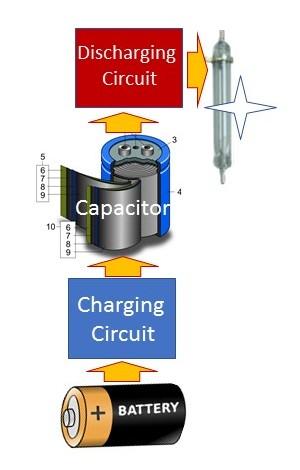Home › Forums › YPS Member Forum › Photo Techniques Forum › How "Fast" is your Flash ?
Tagged: Flash, GN, Guide Number, Power, Speed
- This topic has 0 replies, 1 voice, and was last updated 7 years, 1 month ago by
 Murali Santhanam.
Murali Santhanam.
-
AuthorPosts
-
June 9, 2017 at 3:12 pm #2207
We generally tend to think that using Flash we can freeze subjects. It is generally true. But let us explore this statement further. Let us start by understanding the briefest moment the camera can capture without flash. With DSLR cameras, it can be as low as 1/8000th of a second. We also should know that if we use flash, the shutter speed is forced down to 1/250th of a second in DSLRs, called the X-sync speed. The question is, if the flash can produce really fast light, why are the cameras bringing the shutter speed down to 1/250th of a second when we us Flash? That should make you think, as it did for me.
The other event that made me think was my experiments with Water Sculpture photography. Water Drops move fast and my initial pictures of Water Drops falling into a tank of water, taken using Flash, were far from being sharp. This was the second trigger for me to understand the speed of Flash.
 When we have a question, we turn to Google. I am sure a million wise people have already faced it. Let us first understand, in simple terms, how a flash works. It uses a “Capacitor” to hold small currents at high voltages required to fire the Xenon flash lamp. The capacitor is charged to a high voltage by a charging circuit drawing power from the batteries we insert. It takes a few seconds to charge the capacitor making event photographers tense. When you click a picture, the discharging circuit is triggered and that sends power from the capacitor to the xenon lamp making the flash to fire.
When we have a question, we turn to Google. I am sure a million wise people have already faced it. Let us first understand, in simple terms, how a flash works. It uses a “Capacitor” to hold small currents at high voltages required to fire the Xenon flash lamp. The capacitor is charged to a high voltage by a charging circuit drawing power from the batteries we insert. It takes a few seconds to charge the capacitor making event photographers tense. When you click a picture, the discharging circuit is triggered and that sends power from the capacitor to the xenon lamp making the flash to fire.The old flashes did not have sophisticated discharge units. They acted like pins applied to an inflated balloon which caused the capacitor to discharge all the power through the Xenon Bulb. Hence those flashes produced same light output every time, represented as its “Guide Number” or GN, an information that we used in the past to set the aperture for proper exposure.
The modern flashes can control the amount of light produced by the xenon lamp, like a tap attached to the mouth of the inflated balloon. They control the output by controlling the duration for which power is sent to the lamp from the capacitor.
So much for the understanding of flash. The question that needs to be answered is “What would be the typical duration that it takes to discharge all the power from the capacitor to the Xenon bulb?”. It takes approximately 1/300th of a second to discharge the entire capacitor into the bulb in Canon 430EXII producing its full power! For Nikon lovers, SB-700 takes the same amount of time for a full power discharge. In fact, most of the flashes operate in this range. Now that is not fast enough! If it is hard to believe you may look at some of these sites:
- http://gock.net/blog/2012/01/flash-durations-small-strobes/
- https://community.usa.canon.com/t5/Speedlites/What-are-the-flash-durations-at-the-various-power-levels-for-the/td-p/175540
The camera provides a faster, much faster, shutter than the flash! Fortunately, modern flashes provide the ability to control the power output by controlling the duration of the flash. Many flashes provide menu options on the back-panel of the flash to manually set the flash output. Depending on the flash model you may be able to change the flash output from 1/1, which is full power to 1/128, the lowest power. This means if you set the power to 1/16, the duration of the flash comes down to a decent 1/4800th of a second (1/300 * 1/16), now matching the SLR. If you set the power to 1/128, your flash duration drops down to a superfast 1/38400 of a second, something the mechanical shutters will have very tough time to match. Of course, the amount of illumination produced also drops to a seriously low 1/128th of a level, good enough, perhaps only for macro!
There are very few types of photography where you need to be aware of this. But next time you are trying to “freeze” a bird or a bee in flight using flash, keep this in mind. Flashes are immensely slower than we think.
-
AuthorPosts
- You must be logged in to reply to this topic.
